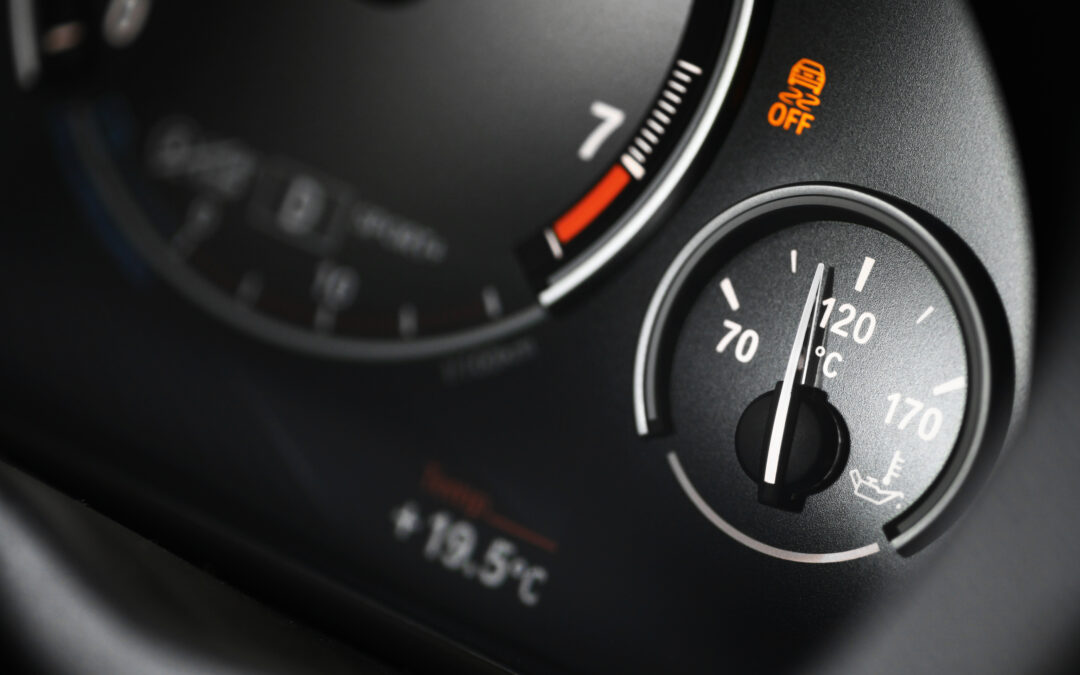Don’t Let Your Cooling System Run Into the Red
Have you ever been driving and notice that the temperature gauge on your dash running into the red? You definitely have a problem with your cooling system. Engine damage from a malfunctioning cooling system can be expensive. It’s not a repair that you want to have to pay. Save yourself some much-needed cash and get your cooling system checked. You’ll be glad you did.
Role of your Cooling System
Inside your vehicle’s engine, fuel is always burning. Your exhaust system takes care of a lot of the excess heat, but some of it absorbs into the engine and heats it up. This is where your coolant system comes in to play. Your engine runs at peak efficiency when your coolant is about 200 degrees Fahrenheit. This optimal temperature allows the combustion chamber to completely vaporize fuel. And at 200 degrees, oil has at a much lower viscosity. Meaning that your engine’s parts move much more freely and waste less energy and exertion getting them going. As a result, the metal parts also wear less, which is good news in the long run.
Cooling System Components
Your cooling system is made up of different parts: the radiator, thermostat and housing, water pump, cooling fan and, of course, a system of hoses. They all work together to carry heat away from your engine towards your radiator for cooling. This keeps your engine running at perfect operating temperature. A problem with any one of these parts can lead to engine overheating. All of these parts will eventually wear out and need replacing.
Common Cooling System Problems
There are several common problems to look out for. First, radiators commonly get clogged with deposits and can even spring a leak. This is especially probable in extremely cold temperatures. Depending on the damage, your radiator can be flushed, repaired or replaced. Replacing a radiator is a pretty cheap expense compared to the alternative. Another common problem is with the radiator cap. The radiator cap’s job is to increase the boiling point of your coolant by using pressure. Think of it like a pressure cooker. If you’re in a hurry to braise some beef, you use a pressure cooker to increase the temperature fast and get the job done quicker. Radiator caps can get worn down. This means that they will no longer hold the proper pressure that your radiator requires. We recommend replacing your radiator cap when you change out your coolant to prevent this inevitable scenario.
Your cooling system issues may also lie with the thermostat. This part opens and closes to regulate the flow of coolant. The secret to this impressive little part is wax. The wax will begin to melt at around 180 degrees Fahrenheit. When the wax melts and expands, a rod inside of the cylinder gets pushed out, opening the valve. It can easily get stuck open or closed and will no longer perform its important function. The thermostat is a small part of the cooling system, but an important one nonetheless.
Occasionally, the problem lies with a leaky water pump or hose. These parts can also be easily replaced. Especially, the hoses! This is not a big job. If you notice coolant pooling on your driveway, it’s best to bring your car in. We can run a pressure test to determine where the leak is. If it’s just a hose, you’ll be good to go and back on the road in no time. You can even choose to replace the hose or hoses yourself. We won’t blame you!
But all of these issues can all be caught early by getting routine tune-ups. It’s best to check your coolant level whenever there is a major temperature change. If you suspect a leak or other cooling system issue, bring your vehicle in to Courthouse for an inspection. We won’t sell you on a bunch of repairs that you don’t need.

